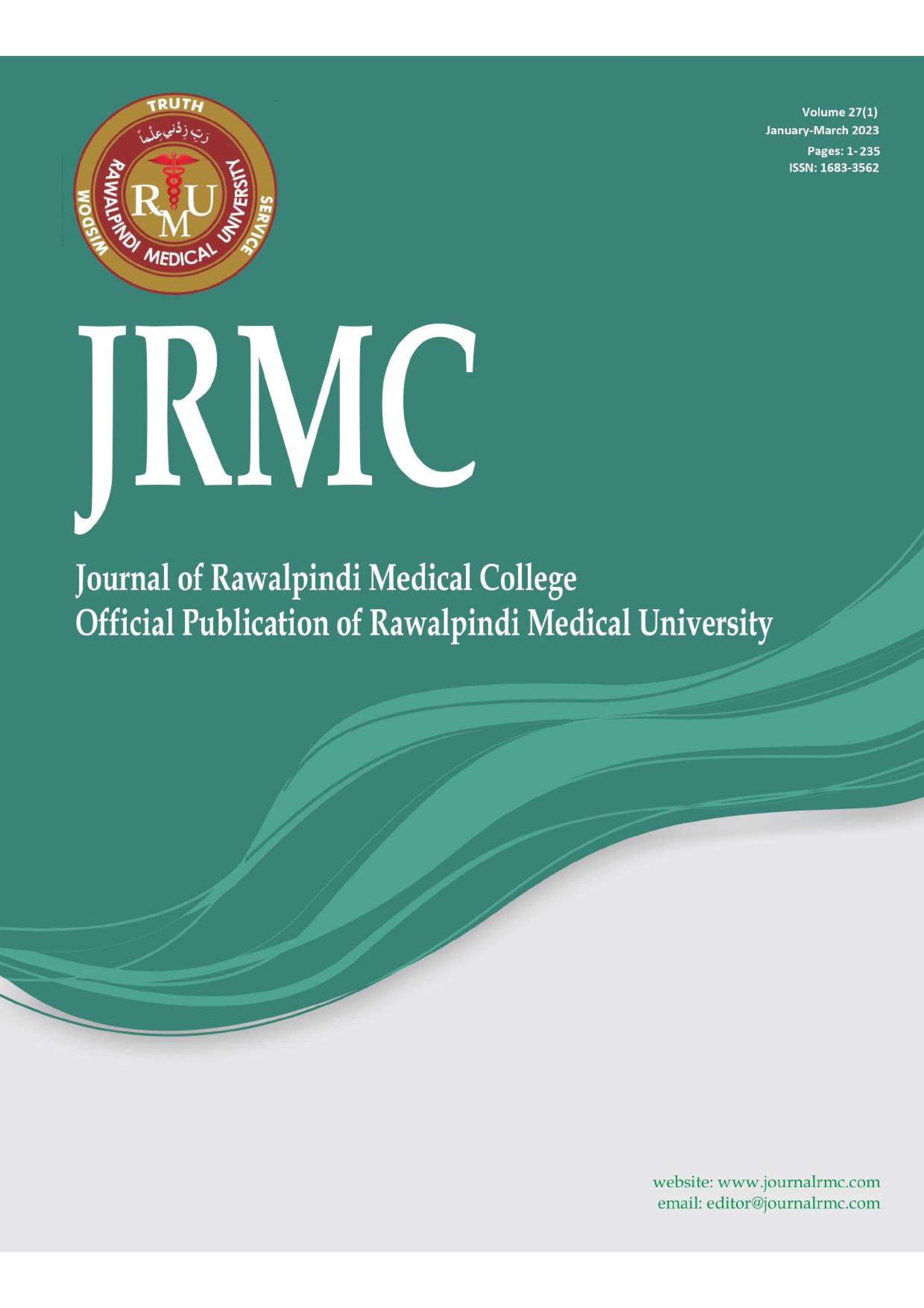Abstract
Background: Thalassemia is a set of inherited hematological illnesses caused by mutations in the genes that code for globin. Regular blood transfusions extend the lives of thalassemia patients, but they also increase the danger of blood-borne illness infections.
Objective: The current study was conducted to check the frequency and risk factors of hepatitis B virus (HBV) infections among β thalassemia major patients.
Methods: The study was conducted over a period of 3 months that is from November 2021 to February 2022 in the department of Thalassemia center CMH Rawalpindi. The study consists of thalassemia patients aged 6 months to 15 years including both male and female patients. Their venous blood was taken and transmitted to the laboratory, Armed force institute of pathology CMH Rawalpindi, for hepatitis B surface antigen test (HbsAg). Their demographic information was gathered, including their age, gender, number of blood transfusions received each year and Hepatitis B virus (HBV) vaccination status.
Results: Out of 100 patients there were 45 patients who were male and 55 patients who were female. The patients' ages span from 6 months to 15 years, with a mean age difference of 11.20 years and a standard deviation of 5.56. In three months, the mean difference in the number of blood transfusions received by patients was 22.7 6.6 SD. Patients under the age of ten were 50 percent of the time, and patients beyond ten were also 50 percent of the time (50 percent). Five (5%) of the total 100 patients tested positive for hepatitis B. In three months, the mean difference in the number of blood transfusions received by patients was 18.2 5.6 SD. Thirty (30%) patients out of a total of 100 were not immunized.
Conclusion: Frequency of hepatitis B in beta thalassemia major patients is minimal (less than 5 per 100) is seen in our study. To reduce the future risk of TTI, development of strong national and regional policies on safe blood transfusion procedures, VNRD-based transfusions, and universal quality-assured donor screening are recommended.
References
. Khalil, Saleem Kha,Akhtar.(2016).Status of Hepatitis B and C in Beta Thalassemia Major Patients. Islamabad medical and dental college;5(2):71-73
Ansar MM, Kooloobandi A. Prevalence of hepatitis C virus infection in thalassemia and hemodialysis patients in north IranRasht. J Viral Hepatitis 2002; 9(5):390-392.
Hussain H, Iqbal R, Hussain Khan M, Iftikhar B, Aziz S, Burki FK, et al..Prevalence of hepatitis C in beta thalassaemia major. Gomal Journal of Medical Sciences. 2008; 6(2):88-90.
Ansari SH, Shamsi TS, Tahir Khan M, Perveen K, Farzana T, Erum S. et al.. Seropositivity of Hepatitis C, Hepatitis B and HIV in Chronically Transfused bb- Thalassaemia Major Patients. Journal of the College of Physicians and Surgeons Pakistan. 2012; 22 (9): 610-611
MakrooR N, Arora JS, Chowdhry M, Bhatia A, Thakur U K,Minimol A. Red cell alloimmunization and infectious marker status (human immunodeficiency virus, hepatitis B virus and hepatitis C virus) in multiply transfused thalassemia patients ofNorth India. Indian J Pathol Microbiol.2013;56(4):378-383
Ehsan H, Wahab A, Anwer F, et al. (August 27, 2020) Prevalence of Transfusion Transmissible Infections in Beta-Thalassemia Major Patients in Pakistan: A Systematic Review. Cureus 12(8)
Ahmed ,Ayub ,Naeem ,Hayat Nazir , Hussain , Ghilzai ,Magnius , Sajjad , Norder.(2021),ThalassemiaPatients from Baluchistan in Pakistan Are Infected with Multiple Hepatitis B or C Virus Strains. Am J Trop Med Hyg;104(4):1569-1576
Azarkeivan A, Karimi G, Shaiegan M, Maghsudlu M, Tabbaroki A. Antibody titration and immune response of Iranian betathalassemic patients to hepatitis B virus vaccine (booster effect).PediatrHematolOncol. 2009; 26(4): 195-201.
Shah N, Mishra A, Chauhan D, VoraCShah NR. Study on effectiveness of transfusion program in thalassemia major patients receiving multipl eblood transfusions at a transfusion centre in western India. Asian J of transfusion science.2010;4(2): 94-98.
Surchi, Omar, and Sarkawt Ali. 2018. "Biochemical Status Of Beta-Thalassemia Major Patients In Erbil City". Erbil Dental Journal 1 (1): 1-9.
Mirmomen S, Alavian SM, Hajarizadeh B, Kafaee J, Yektaparast B, Zahedi MJ, Zand V, Azami AA, Hosseini MM, Faridi AR, Davari K, Hajibeigi B. Epidemiology of hepatitis B, hepatitis C, and human immunodeficiency virusinfecions in patients with betathalassemia in Iran: a multicenter study. Arch Iran Med.2006; 9(4): 319-323.
Ishahak I, Baharin R, Hakim AS, Abu Bakar M, George E. Antibody to hepatitis C virus in thalassemia patients. Malay J Pathol 1993; 15:85-87.

This work is licensed under a Creative Commons Attribution-ShareAlike 4.0 International License.
Copyright (c) 2023 Akber Hussain, Qudratullah Malik, Farooq Ikram, Naem Ullah, Muhammad Tariq Nadeem, Murtaza Hussain





